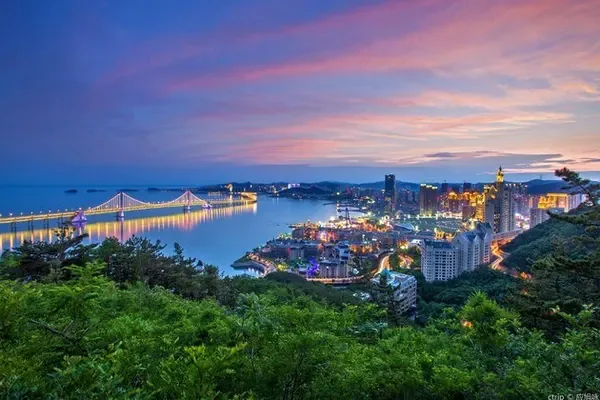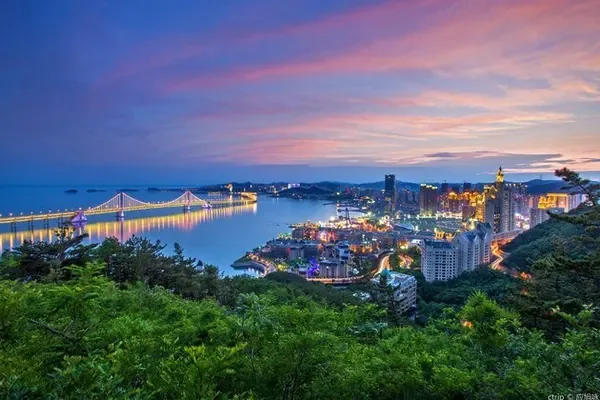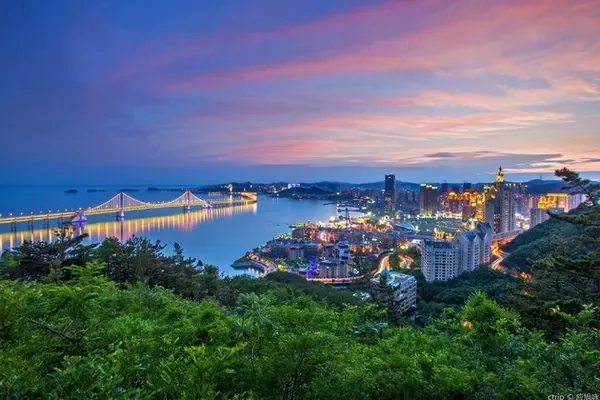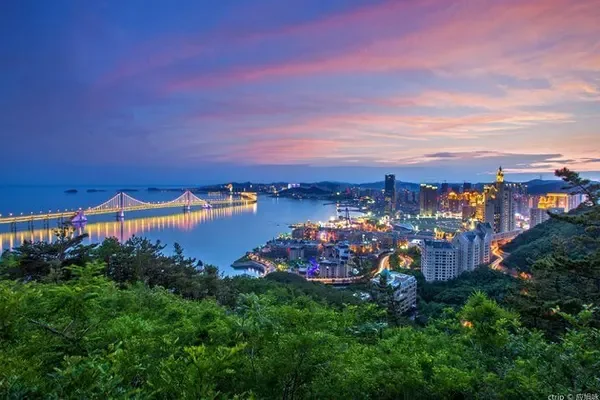Xi'an, known as Chang'an in ancient times, has a long history. Here, the thousands of years of precipitation and heritage of the Chinese nation are still quietly continuing, including culture, customs, virtues, traditions, and even dross. "Chang'an has been the capital of emperors since ancient times." The splendor of the Zhou, Qin, Han and Tang Dynasties made Xi'an, which is one of the four ancient capitals in the world together with Athens, Cairo, and Rome, reveal a trace of the imperial city spirit that cannot be concealed.
The air here is full of allusions and legends that have passed away in the long river of history, the camel bell that reminds us of the starting point of the Silk Road, the envoys from all over the world who worship, Xuanzang who translates scriptures under a lonely lamp, and the noble concubine dancing in colorful clothes in the pear garden... Walking on the street and walking under the majestic city wall, visitors will have a strange sense of interlacing with the ancient and heavy history inadvertently.
Panorama of Henan and Shaanxi, don't go back, Ctrip is in hand, we agreed to go together.....
[Zhengzhou]: referred to as Zheng, known as the capital of business in ancient times, is the capital of Henan Province, an important central city in central China, an important national comprehensive transportation hub, a commercial and logistics center, a megacity, and the central city of the Central Plains urban agglomeration. It is located in the north-central part of Henan Province , with Kaifeng in the east, Luoyang in the west, the Yellow River in the north, Xinxiang and Jiaozuo in the north, Xuchang and Pingdingshan in the south
[Luoyang]: Luoyang has a history of more than 5,000 years of civilization, more than 4,000 years of history of building a city, and more than 1,500 years of history of building a capital. Thirteen dynasties including Zhou, Later Liang, Later Tang, and Later Jin established their capitals in Luoyang, known as the ancient capital of thirteen dynasties
[Kaifeng]: Kaifeng, known in ancient times as Laoqiu, Daliang, Chenliu, Bianzhou, Tokyo, Bianjing, Bianliang, etc., referred to as Bian, is a prefecture-level city under the jurisdiction of Henan Province. It is located in the hinterland of the Central Plains and on the shore of the Yellow River. Adjacent to Zhengzhou, it is connected to Shangqiu in the east, Xuchang and Zhoukou in the south, and Xinxiang across the Yellow River in the north. Kaifeng is one of the first batch of national historical and cultural cities, one of the five ancient capitals of China, and the ancient capital of the Eight Dynasties
[Qingming Shanghe Garden]: Known as the "Central Plains Ferry", Luoyi Ancient City Cultural Tourism Scenic Spot is located in the old city of Luoyang City, Henan Province. The scenic spot includes Wenfeng Pagoda, Henan Fu Confucian Temple, Tuoling Palace, Four Eyes Well, Jinyuan Ancient City Wall Ruins and other historical period protected buildings. It is a comprehensive cultural tourism integrating sightseeing, play, eating, living and shopping. As a theme cultural park integrating historical and cultural tourism, folk custom tourism, leisure and vacation tourism, interesting entertainment tourism and ecological environment tourism.
[Shaolin Temple]: Shaolin Temple is the birthplace of Chinese Zen Buddhism and Chinese Kungfu. It is now a world cultural heritage, a national key cultural relic protection unit, and a national AAAAA-level tourist attraction. It is located at the foot of Wuru Peak, Songshan Mountain, Dengfeng City, Zhengzhou City, Henan Province. Because it is located in the dense jungle of Shaoshi Mountain in the hinterland of Songshan Mountain, it is named "Shaolin Temple". It was first built in the 19th year of Taihe (495) of the Northern Wei Dynasty. It was built by Emperor Xiaowen at the northern foot of Shaoshi Mountain, Songshan, which is opposite the capital Luoyang, in order to house the eminent Indian monk Bhatuo he admired. The permanent hospital of Shaolin Temple covers an area of about 57,600 square meters. The current abbot is Shi Yongxin, the 47th and 33rd descendant of Caodong Authentic Sect.
[Yuntai Mountain]: Yuntai Mountain Scenic Area is named because of the steep mountain and the perennial clouds and fog between the peaks and valleys. Zhuyu Peak, the main peak of Yuntai Mountain, is 1308 meters above sea level, and there is Yuntai Sky Waterfall with a drop of 314 meters. It is one of the waterfalls with the highest drop found in China at the end of Quanpu Gorge in the scenic spot.
[Baogong Temple]: Baogong Temple was restored and rebuilt to commemorate Bao Zheng, an ancient Chinese official and political reformer. It is located on the west bank of Baogong Lake in Kaifeng City, Henan Province. It is one of the important scenic spots in the Central Plains tourist area developed and constructed by the National Tourism Administration. one.
[Xi'an]: The ancient city walls and terracotta warriors with a sense of history, and various delicacies for you to feast on. The rolling red dust is the capital of emperors and kings, and the city of common people has been living for a long time.
[Huashan]: It has attracted countless tourists with its steepness. The views, courtyards, pavilions and pavilions on the mountain are all built according to the situation of the mountain. The mountains fly up like castles in the air, and there are ancient pines against each other, which is even more unique. The mountains are beautiful and have different images, such as Han Xiangzi driving a cow, a golden toad playing a tortoise, and a white snake in distress.... The gurgling water in the valley road and the water curtain waterfall in the mountain stream are even more interesting.
[Terracotta Warriors and Horses of the Mausoleum of Qin Shihuang]: It is the burial pit of the Mausoleum of Qin Shihuang. According to historical records: Qin Shihuang Yingzheng began to build the cemetery when he came to the throne at the age of 13. The cemetery was planned and designed by Prime Minister Li Si and supervised by General Zhang Han. It took 38 years to build it. The vastness of the project and the grandeur of the spirit set a precedent for the extravagant burial of feudal rulers in the past dynasties.
[Huaqing Pool]: Integrating human history and natural landscape, the emperors of Zhou, Qin, Han, Sui, Tang and other dynasties built their palaces here. The scenic area imitates the magnificent Tang Dynasty architecture, and the garden scenery is unique. There are mainly Tang Huaqing Palace Yutang Site Museum, Xi'an Incident Site, Jiulong Lake and Furong Lake Scenic Area, Tang Liyuan Site Museum, and landmark buildings such as Feishuang Hall, Zhaoyang Hall, Changsheng Hall, Huanyuan, and Yuwang Hall. .











